Storm Isha woke me well before dawn. The wind thundered and battered and rumbled and boomed, a huge and muscular presence, blasting in from the Atlantic and across the land. It had eased a little by morning but the loch was still creased by it, gleaming coldly in the salt-laden light.
The silken rhythms of light and dark that the wind draws over the water surface make me want to get back in the studio and draw in response.
Drawing is movement held in stillness. Or maybe drawing reveals the stillness within movement. Water seems to be the perfect expression of this duality. Water is as old as the Earth, perhaps, some say, even older. And yet it’s in constant motion, responding to every shift of light and air, freshly new every moment, as liquid water, invisible vapour, solid ice and all manner of fogs, rains, floods, blizzards and bogs.
My own efforts to capture this stillness in movement fall short, too stiff and mannered. But I'll keep working towards it.

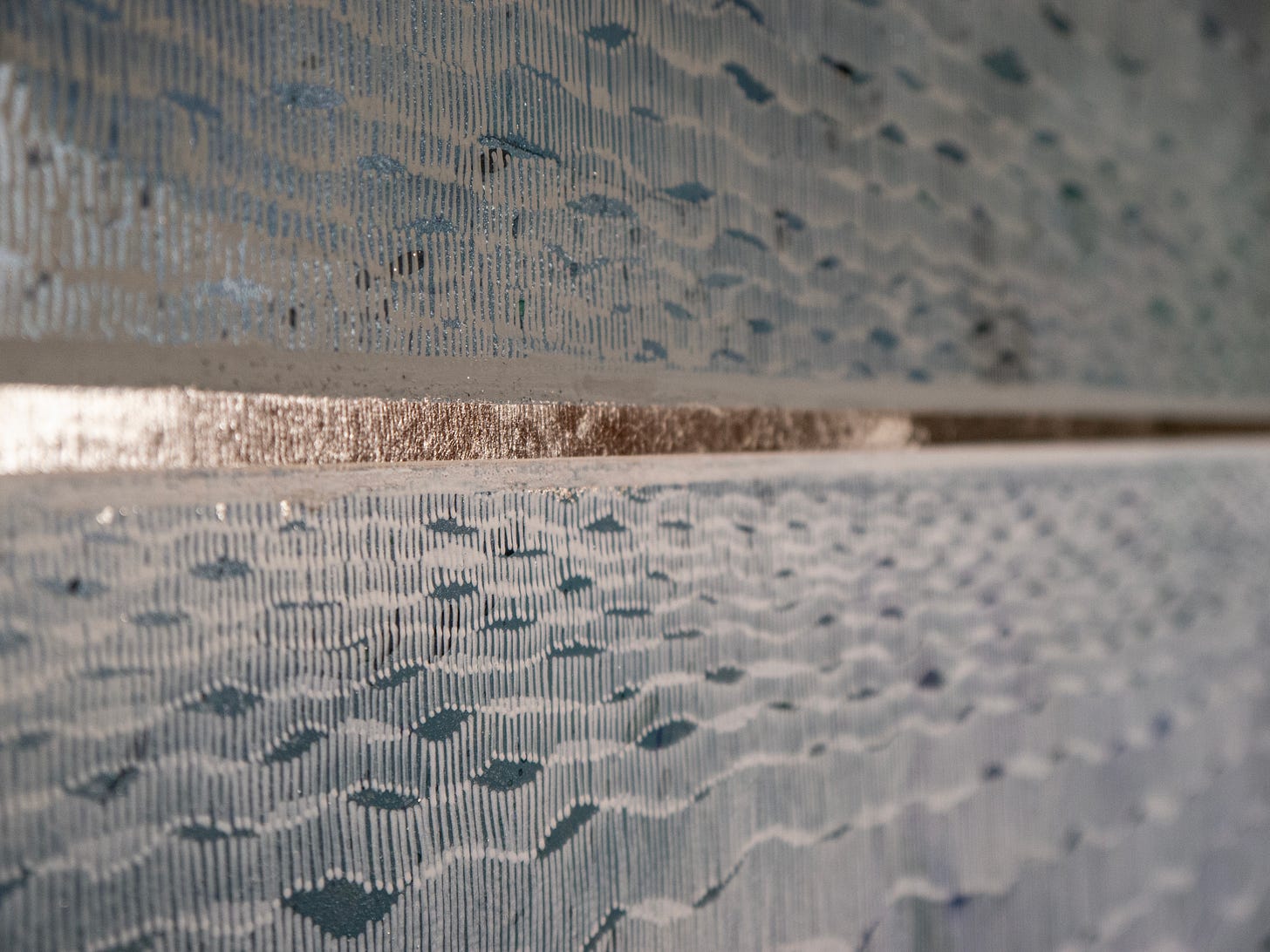
I've been reading about the musician John Cage, and especially the insights he drew from Eastern art and philosophical traditions. Cage was still a young composer when he began to struggle with the idea that art was meant to communicate something. If art was meant to be a vehicle for self-expression, he felt it wasn't a very good one. It seemed to be creating a Tower of Babel; all these individual artists shouting to be heard, each one speaking their own personal language, incomprehensible to others.
There had to be another way, he thought. He found clues in his study of Zen and Indian philosophy. He began to reject the idea of the heroic, self-aggrandising ‘masterpiece’ as a product of the artist’s ego, but he was struggling to find another approach and became so discouraged he considered giving up altogether.
The breakthrough came when he spent time studying classical Hindustani music with the Indian musician Gita Sarabhai, in exchange for giving her lessons on Western contemporary music and counterpoint while she was visiting New York.
Sarabhai told Cage that in the Indian classical tradition the function of music was not to express some individual experience, but to ‘sober and quiet the mind, thus rendering it susceptible to divine influences’.
Cage was thunderstruck.
He then learned that this same idea had prevailed in early European music traditions, until the Renaissance placed the perfectible individual human at the centre of the universe. Cage rejected this notion, along with the Romantic ideal that art should give expression to turbulent emotion. Instead he longed for an art of tranquility, art that offered a healing release from the temporary emotions, art that carried a ‘shining aura of peace’.
More and more I find myself drawn to art that carries this aura. I wrote in The Clearing about my love for the work of the painter Agnes Martin. More recently I’ve been contemplating the calligraphic whole-field paintings of Cage’s contemporary and friend Mark Tobey.
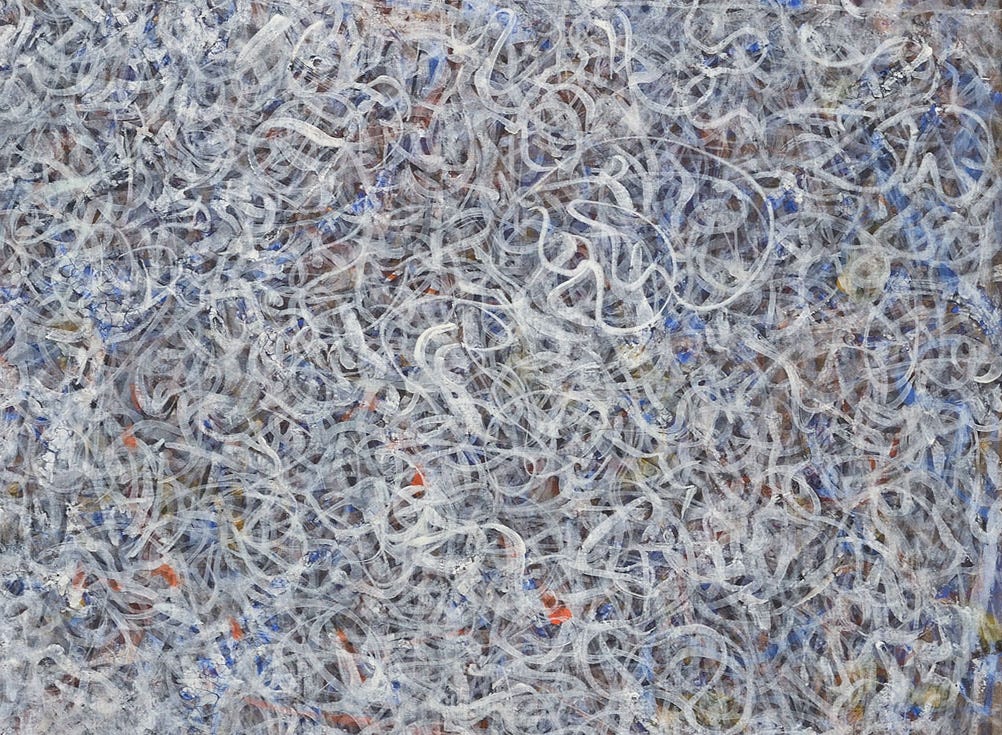
And the exquisite, shimmering ink drawings of Pakistani artist Waqas Khan, that he creates from millions of tiny hand-drawn lines or dots.
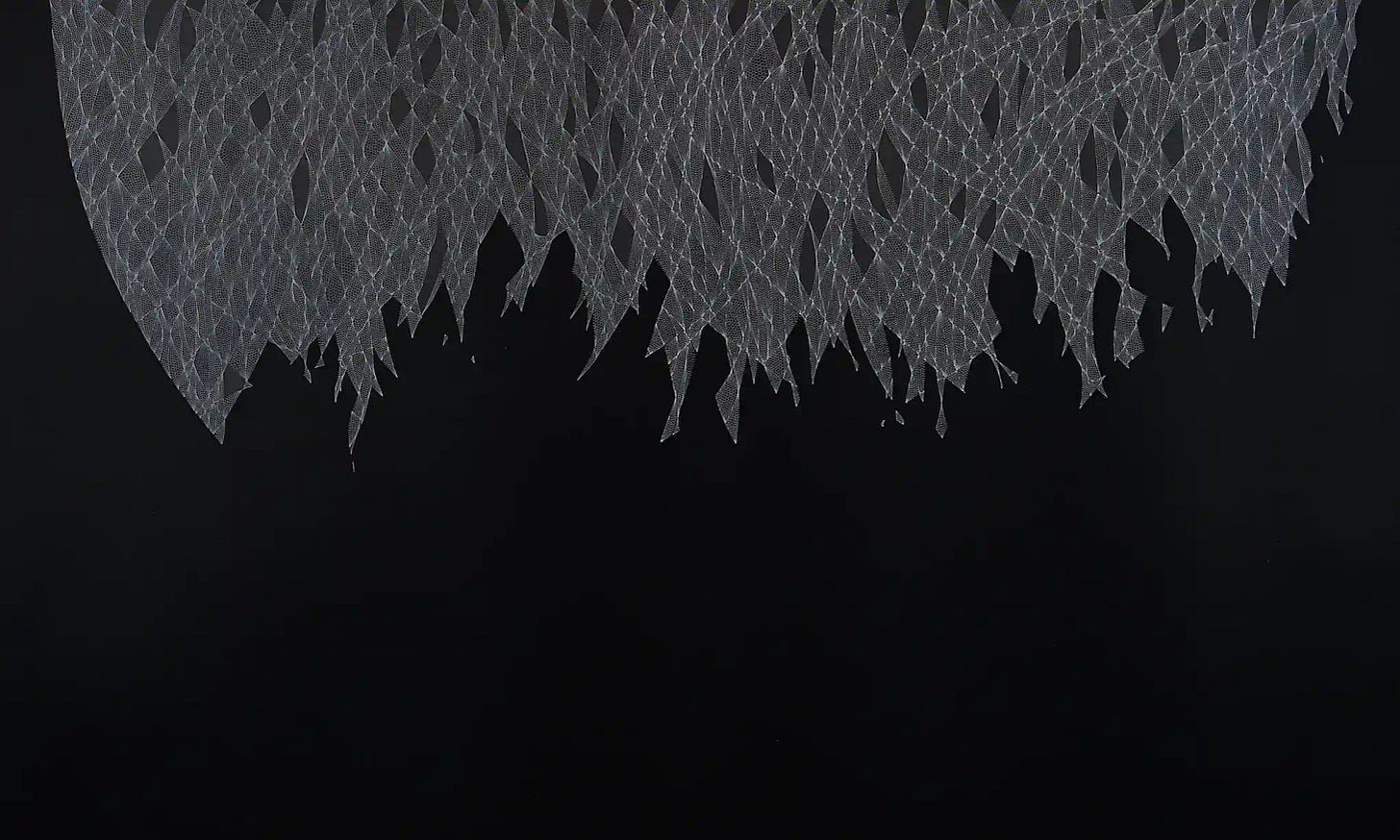
When I see works like these it’s easy to feel deflated more than inspired. They surpass my own efforts so utterly. They make me feel like I don’t have a bone of originality in my entire body.
But then I remember that originality isn’t actually the point. Our creative culture seems to demand of us endless innovation as an expression of our unique human self. But the idea that art is an expression of individual subjectivity and its extremes of emotion - the whole heroic Sturm und Drang shebang - is just one very specific cultural moment in Western art history. And frankly, it gets a bit tiring. The Tower of Babel is noisy.
As an island-dweller, my creative work is a response to the presence of water, and frequently the sea. Seascapes often aim to capture the ever-changing drama of light and water and wave, often projecting some kind of emotion onto it all.
I'm a huge fan of Turner, don't get me wrong. But I want to find the stillness within and behind all the movement and noise. The calm. The peace. And if I do so by drawing upon the work of those who have walked this quiet path before me instead of forging something brand new, then that’s OK by me. Let’s have no more heroes. This isn’t about newness, or individuality. It’s about creating a corner of peace in an increasingly noisy world, and sharing it.
Another storm has rolled over Orkney today. The door to my studio is buzzing like a kazoo. There’s a tiny pinhole gap in the seal that I can’t for the life of me find. The rain is rattling against the windows. Outside, the polytunnel is juddering and the tarpaulin I tied over the upturned boat has come loose at the edge again and is cracking like a whip. I’ll have to secure it before nightfall.
But for all the boom and rumble, the sheer noise and drama of storms, it serves us well to remember that in the end, like Isha, they all eventually blow themselves out.
Thanks for reading. Do feel free to share or forward this email if you know someone else who might enjoy reading it.
Join the Life Raft Co-Working Session
Remember we have our weekly Life Raft Co-Working Session today (Wednesday) at 3-4pm UK time. You can save the link as it’s the same every week, and do forward it to invite a friend you think would enjoy joining us.
And if you can’t make the time, or would like to see what goes on before you join us live, you can watch the recording from last week here. Password: N*=Q4J9W
That’s all from The Life Boat this week!
Warmly
Sam


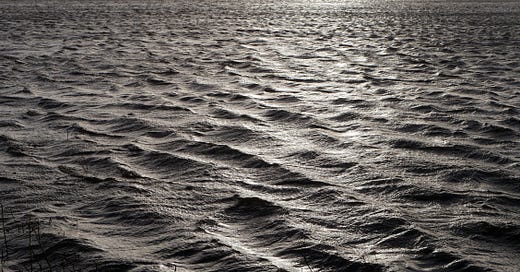



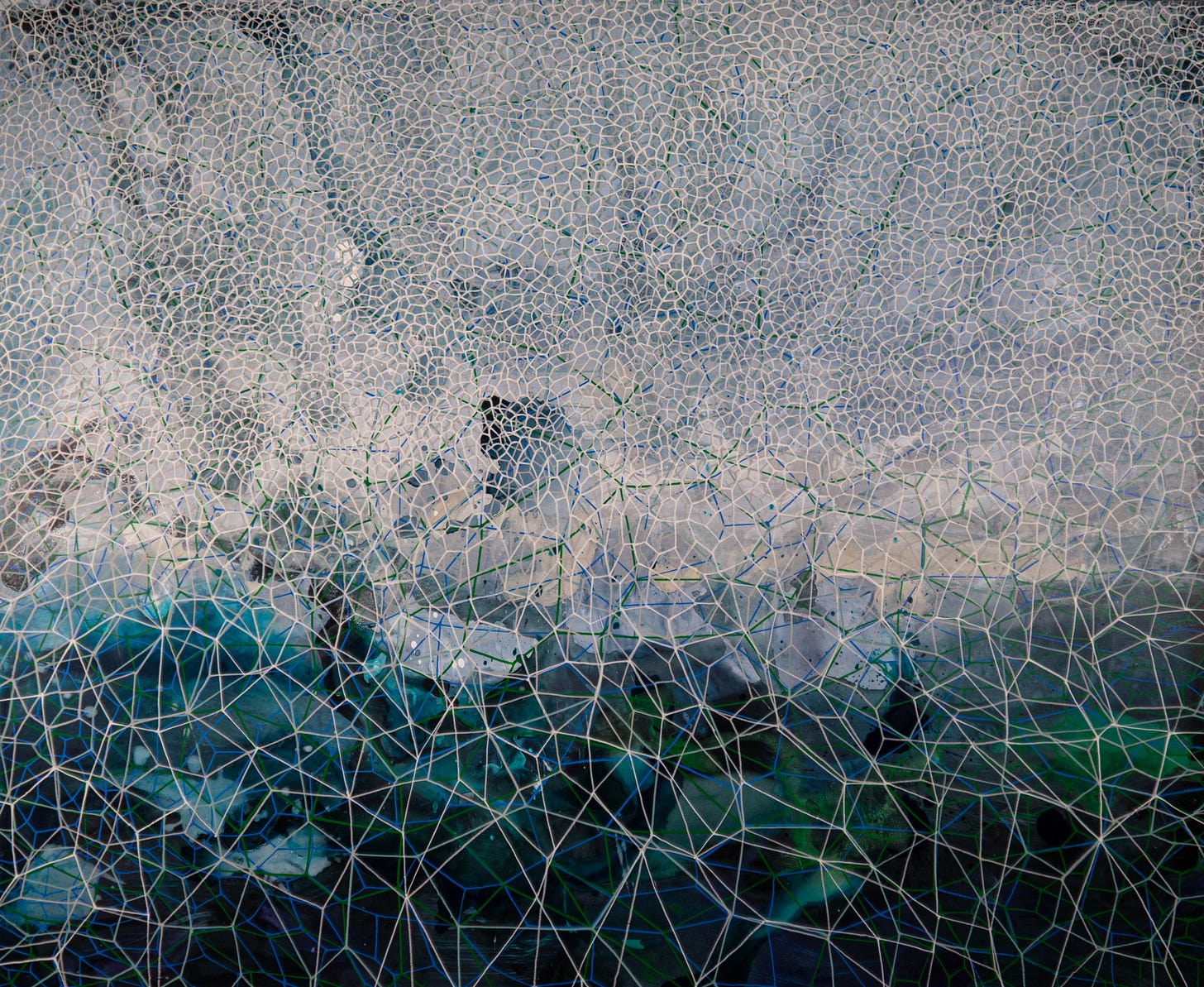
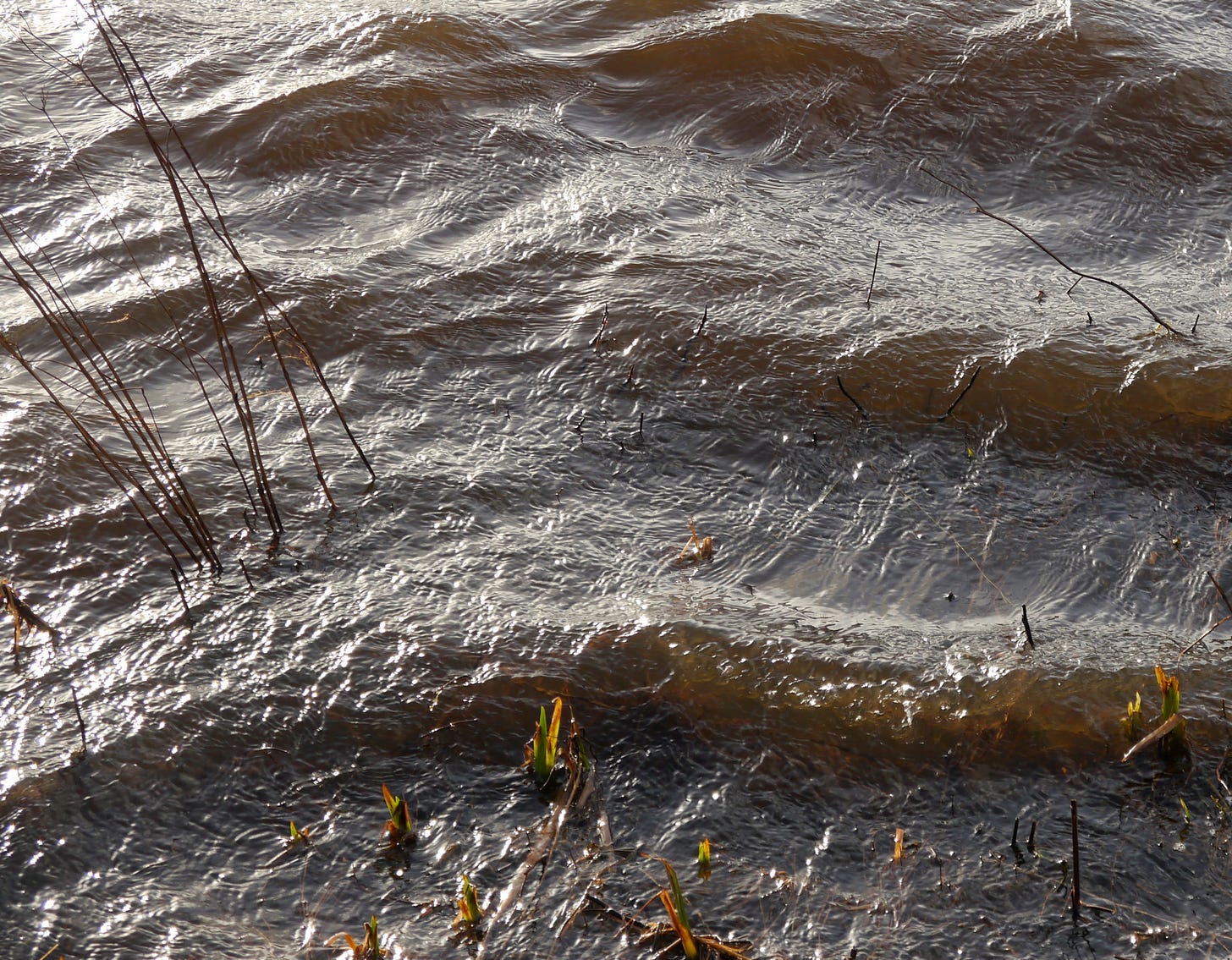
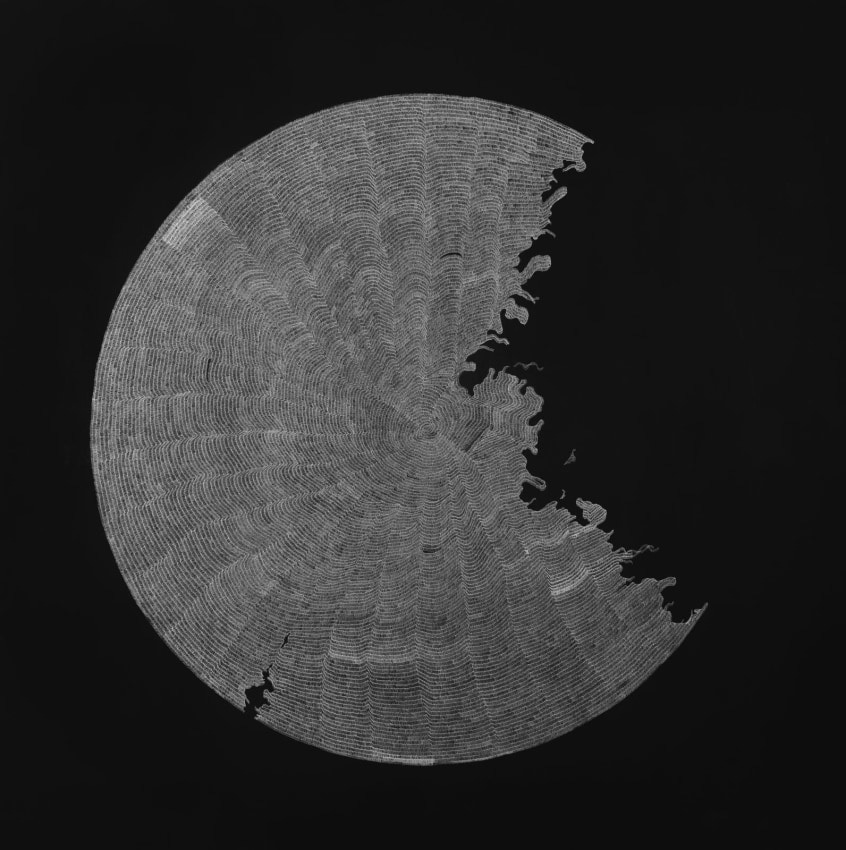
Thank you, Samantha. So beautifully explored. I did watch some of last week's Co-Working session and how wonderful. Unfortunately, that would be about 2am in Australia our time and it may only cheese you all off to know about our sunshine and 30 degree C days.
corner of peace. The perfect phrase. You express so eloquently what I hope to achieve. I was fortunate to live in a desert country for many years, we spent a lot of our spare time camping. The silence, and beauty and ever shifting sands have always stayed with me. It was hard to capture but I have one treasured piece from that time. It reminds me and takes me back. And. John Cage, love his thinking and his chance drawings, saw the exhibition Every Day is a Good Day at the Baltic and luckily bought the catalogue, it’s expensive and hard to find now.